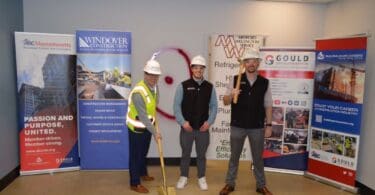It’s uplifting to read reports about the increased demand for green building despite the severely reduced demand for building overall. However, the increased competition in the green building space has forced building professionals to claim expertise in green building and market themselves as such, whether or not they can really deliver on this claim.
As I’ve written in recent posts, our 2010 industry survey and other experiences have revealed a significant gap between aggressive marketing and institutional capability. Terrachoice illustrated this last week for products in their excellent presentation on “The Sins of Greenwashing” – today we’re offering our own version of this framework focused on building professionals.
The Sins of Building Professional Greenwashing:
1. Sin of Fibbing: Stretching the truth, making irrelevant claims. “We’ve been green since the 1970’s,” or “we specify green carpet all the time.”
2. Sin of Over-Reliance on LEED: This happens when building professionals think delivering LEED projects is equivalent with delivering sustainable projects. This sin can be thought of as necessary but not sufficient. Many firms who took our survey (link) said that they had worked on LEED projects but did not have the capability to deliver consistent green design.
3. Sin of Misusing LEED: This happens when projects do design to LEED requirements instead of using it as a measurement tool. This problem is compounded by the credit-hunting mentality that prevents projects from realizing their full potential.
4. Sin of “Certifiable”: This includes claims such as, “This is a green building because we designed it using the LEED checklist”? Rarely has this claim been verified. In fact, in most projects that have taken this approach, third-party evaluations have found the buildings to be non-compliant.
5. Sin of the Leadership Void: This happens when there is a lack of follow-through on promises from leadership. There is no evidence that sustainability is a priority within the organization or a fundamental approach to design excellence. Without a structure of accountability and a clear message of priority, public declarations are meaningless.
6. Sin of the One-hit Wonder: This happens when teams claim that a project is green because they held one kick-off meeting that was a green/LEED charrette but did not incorporate integrative design into their project management. The team starts the project with a feel-good focus on sustainability, but walk away from the charrette without a workplan, responsibilities or deliverables related to performance targets. As a result, the momentum dies and the integrative design process disintegrates.
7. Sin of the Status Quo: This happens when teams continue to repeat the traditional linear approach to design but expect a different outcome. Highly integrated building systems require an integrative and collaborative design process, which is iterative and performance based.
8. Sin of First Cost: This happens when the team fails to look at the life cycle cost impacts of the building or products. Even in the case of public projects, where the capital funds are separate from the operating budget, there are critical elements of building systems that require life cycle costing.
9. Sin of Attitude: This happens when the team says “That can’t be done”, “We’ve tried that and it doesn’t work”, or “It’s too risky.” Bringing a bad attitude to the table makes it harder for the team to deliver a successful project. However, this isn’t nearly as bad as the…
10. Sin of False Representation: This happens when individuals claim that they are “on board” and committed but in reality don’t make any efforts to support sustainability goals.
Such greenwash may be understandable from the point of view of the difficult economy, but it prevents clients from understanding a firm’s capacity to deliver sustainability services. For example, building owner Doug Noonan says, “Every service provider who comes to us tells us they’re experts in sustainable design and construction. In truth, there’s no way for them to back that claim up.” That is now changing. Companues such as Vanderweil, Shawmut and Goody Clancy are going through the SPI Green Firm Certification program, becoming certified as organizationally capable to deliver consistent, high-quality sustainability services.
As with products, professional greenwash creates the illusion of sustainability without actually transforming building practices and projects. But as clients become more sophisticated, they look for professionals and teams that can demonstrate measurable, performance-based sustainability. Sometimes, we “sin” out of ignorance or complacency, and sometimes we may be intentionally misrepresenting in order to win a project. The bottom line is that we need to be honest about our level of professional practice and the claims we make (us included). At the end of the day, the only thing that matters is the impact of the buildings we design and if we are contributing to a sustainable future.


